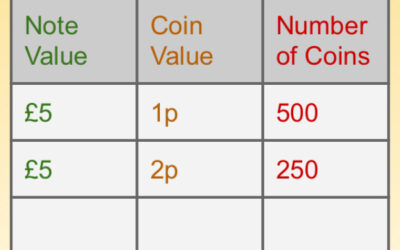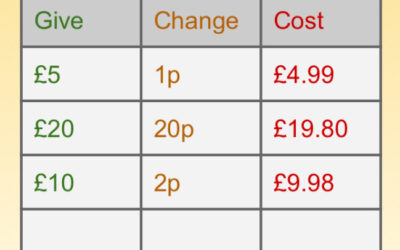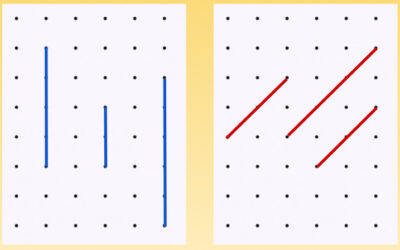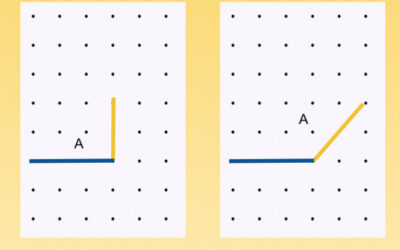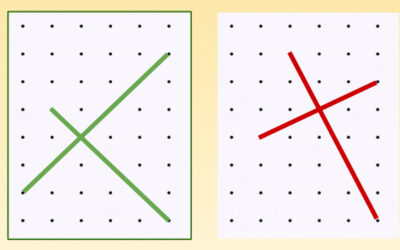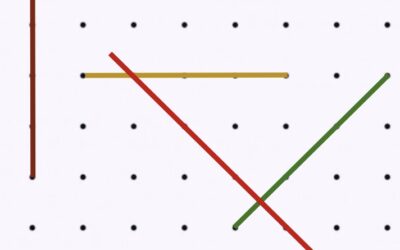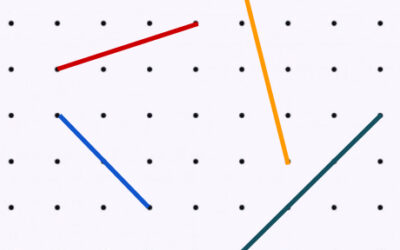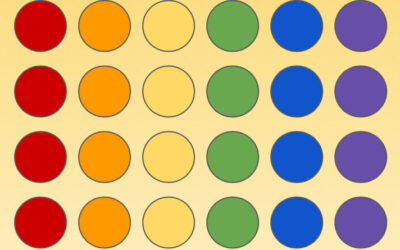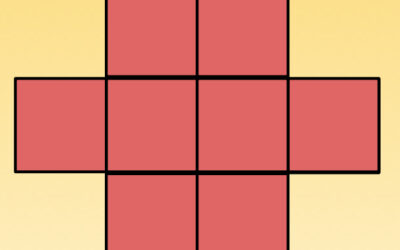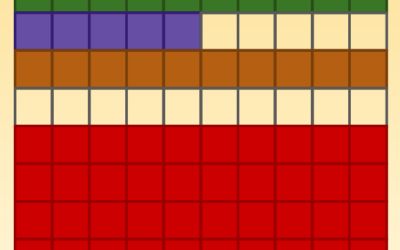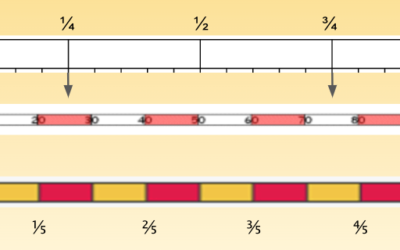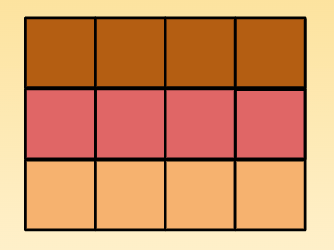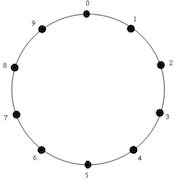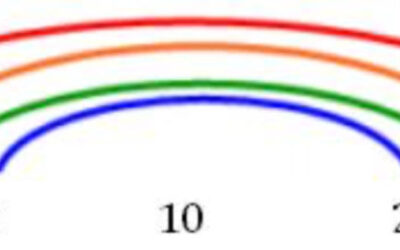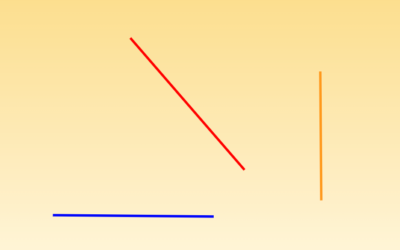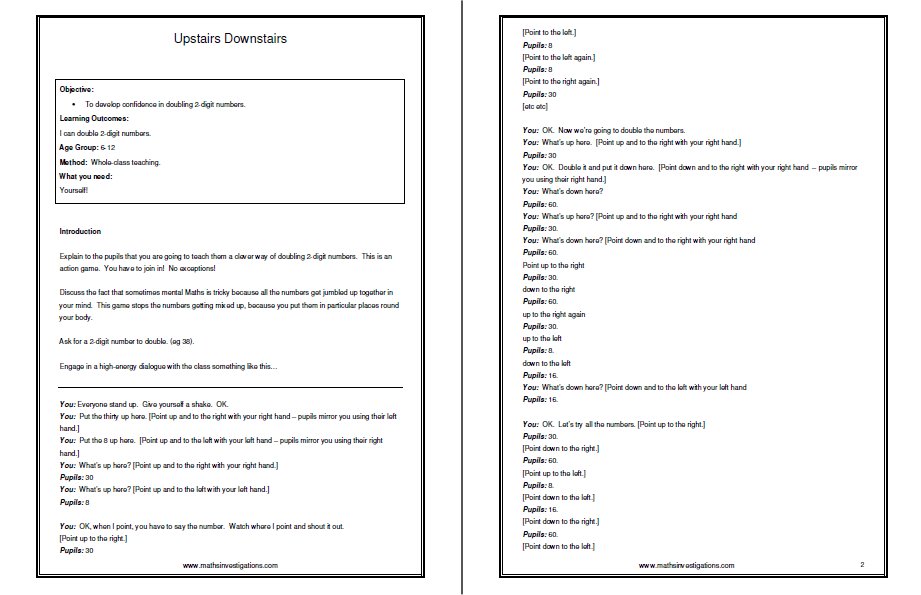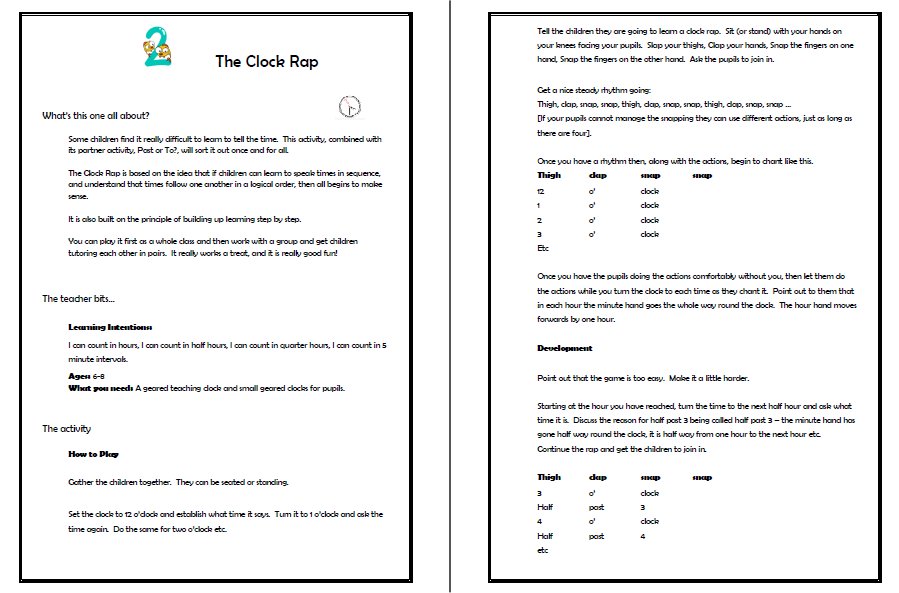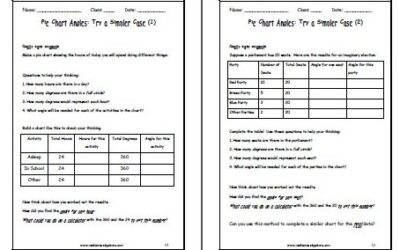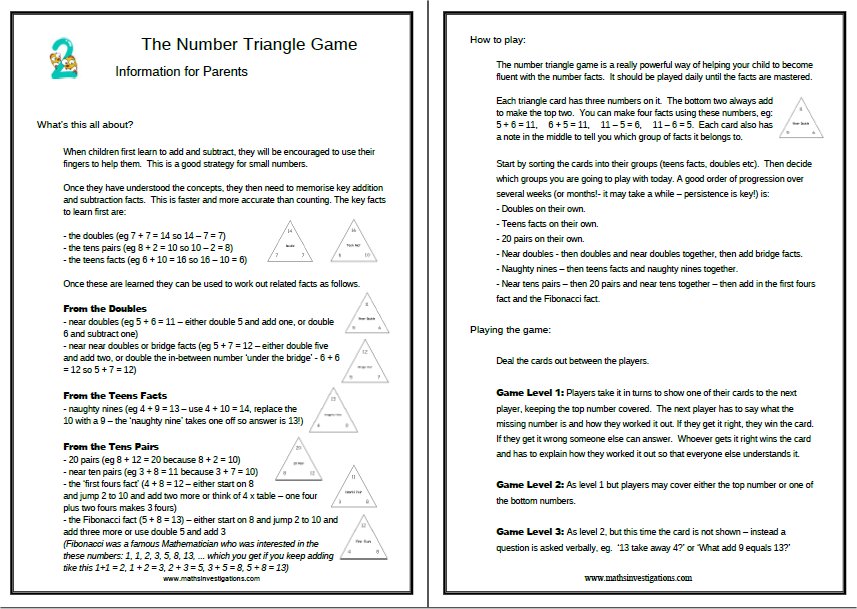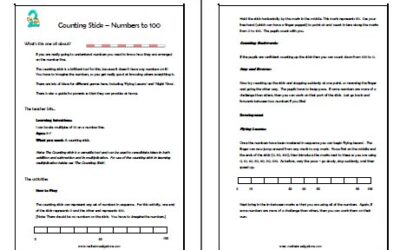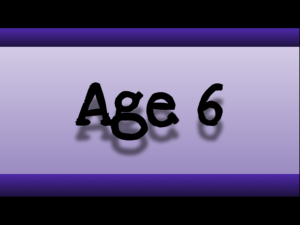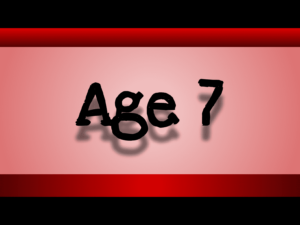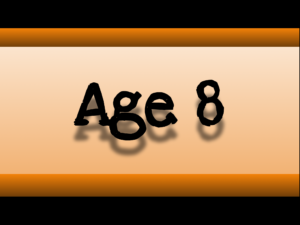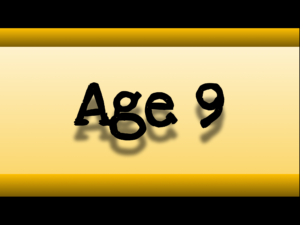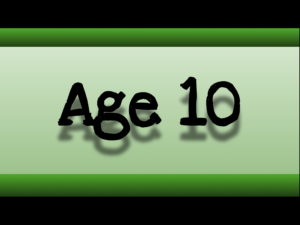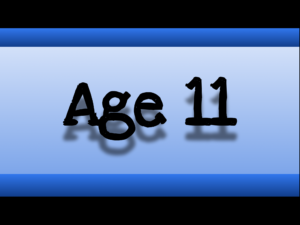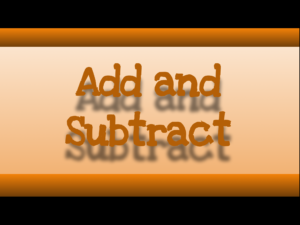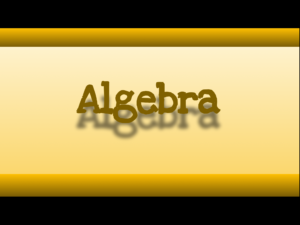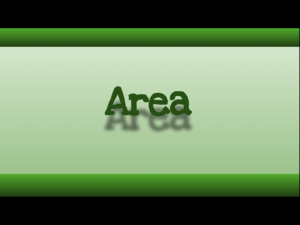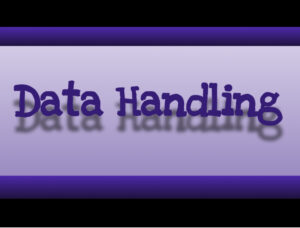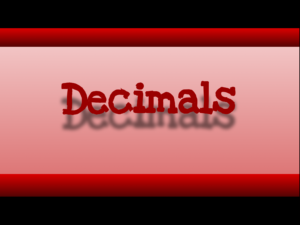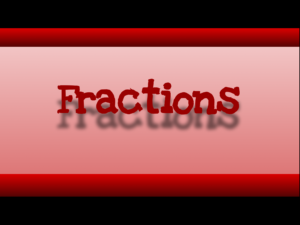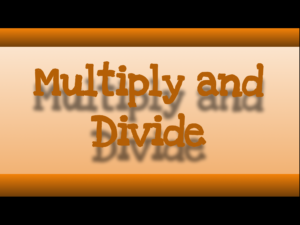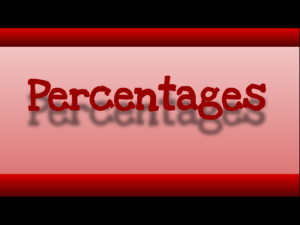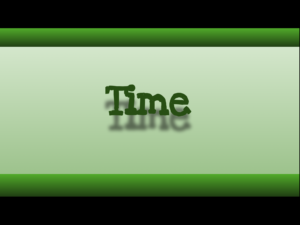Below you will find a list of activities that may be suitable for this age group. Please remember, however, that a child’s ability to engage with any activity will depend more on their prior experience and understanding than on their chronological age. Please, therefore, also browse the activities for adjacent age groups.
Money Puzzle: Notes and Coins
This unit begins with a numberless problem, which we try to to solve by putting different numbers in. In the process, we look at UK coinage and notes and the patterns in the numbers. There is then a...
Money Puzzle: Change
This unit begins with a numberless problem, which we try to to solve by putting different numbers in. In the process, we look at UK coinage and notes and the patterns in the numbers. There are then...
Parallel and Perpendicular Lines
This activity introduces the concept of parallel and perpendicular lines. The children use spotty paper to draw their own lines. Once they have learned the concepts, the children play a talking...
Angles and Turning
This activity explores the concept of angle as turning. We are introduced to the straight angle and the reflex angle. The children use spotty paper to draw their own angles. Once they have learned...
What are angles?
This activity introduces the concept of angles. We meet acute, right and obtuse angles where lines intersect and learn to recognise them at different orientations. The children use spotty paper to...
Intersecting Lines
This activity explores the concept of intersecting lines. The children use spotty paper to draw their own lines. Once they have learned the concepts, the children play a talking game to consolidate...
Horizontal, Vertical and Diagonal Lines
This activity introduces the concept of horizontal, vertical and diagonal lines. The children use spotty paper to draw their own lines. Once they have learned the concepts, the children play a...
Arrays, Rows and Columns
This activity introduces the concept of arrays and explores the language of rows and columns. Once they have learned the concepts, the children make arrays of their own choice and then use these to...
What is area?
This activity introduces the concept of area as the space covered by a flat shape and explores how areas can be compared by counting squares. Once we have learned the concepts, we are given an open...
Fractions on a Hundred Square
This short exploration uses a hundred square as a representation of one whole, to explore how fractions work on a hundred square. It is assumed that the children have a basic understanding of...
Fractions on a metre stick
This extended exploration makes use of a variety of different visualisations to help develop the understanding of equivalences between fractions, decimals and percentages. We start with the metre...
Rectangle Diagram – Multiply Two Numbers
This is one of a series of visual skill builders which are designed to give children a toolkit of diagrams, words and phrases to help them explain their mathematical understanding and solve...
Multiples and Digit Wheels
This is a lovely activity which is very simple to do, and is great for showing that Maths is full of patterns. The patterns in the numbers then generate satisfying visual patterns. Important Note:...
Factor Rainbows
A factor rainbow is a beautiful idea that deserves to be part of every child’s Mathematical vocabulary. This mini exploration encourages them to explore freely and see how many they can find....
How Long is a Line?
This activity is designed to develop children’s skills in estimating and measuring short distances less than 30cm, while consolidating the vocabulary of horizontal, vertical and diagonal lines. It...
Upstairs Downstairs
Get things moving with this lively game which uses the space around the body to develop skills in doubling. Can also be used for halving.
The Clock Rap
Make time fun with this highly popular game to help understand that times follow one another in sequence.
How Many Hula Hoops?
How many hula hoops (the small, crunchy variety!) would it take to stretch from the school to Big Ben in London? Investigate metres, converting to km, using conversion tables and working with BIG...
The Number Triangle Game
When children first learn to add and subtract, they will be encouraged to use their fingers to help them. This is a good strategy for small numbers. Once they have understood the concepts, they...
Back to Back Metre Sticks
Ever heard of learning money with metre sticks!? This elegant but simple activity will help develop recall of the number pairs that add to make 100 and so help with finding change from £1.
